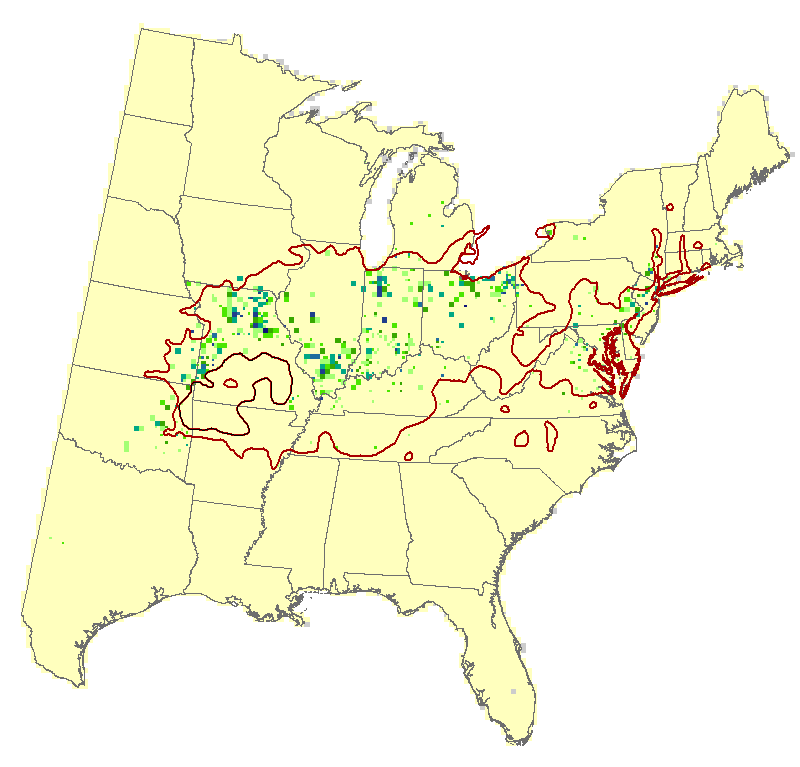pin oak (Quercus palustris)
Model Reliability: Low
| GCM SCENARIO | % Area Occ | Ave IV | Sum IV | Future/Current IV |
|---|---|---|---|---|
| Actual | 1.8 | 8.5 | 4475 | N/A |
| RFimp | 2.3 | 4.1 | 2785 | 0.62 |
| CCSM45 | 3.3 | 2.8 | 2692 | 0.97 |
| CCSM85 | 5.1 | 2.3 | 3409 | 1.22 |
| GFDL45 | 7.3 | 2.4 | 5205 | 1.87 |
| GFDL85 | 12.3 | 2.2 | 7753 | 2.78 |
| HAD45 | 6.1 | 2.2 | 4011 | 1.44 |
| HAD85 | 8.7 | 2 | 4979 | 1.79 |
| GCM45 | 8.2 | 1.6 | 3972 | 1.43 |
| GCM85 | 13.2 | 1.4 | 5386 | 1.93 |
Regional Summary Tree Tables
Summaries for tree species are available for a variety of geographies, in both PDF and Excel format. These summaries are based on Version 4 of the Climate Change Tree Atlas
Interpretation Guide
Pin oak is is narrowly distributed (2.7% of area), sparse, but high IV species commonly found in the central portion of the eastern US. Its low reliable model suggests a 'No change' in habitat, and its adaptability is low, resulting in an overall capability of poor. SHIFT shows moderate infilling.
Family: Fagaceae
Guild: persistent, large-seeded, advance growthdependent
Functional Lifeform: medium-size deciduous tree
| 2.8 | -0.65 |
| -1.39 |  |
MODFACs
What traits will impact pin oak's ability to adapt to climate change, and in what way?:
Primary Positive Traits
Primary Negative Traits
Fire topkill Shade tolerance Insect pests Disease



